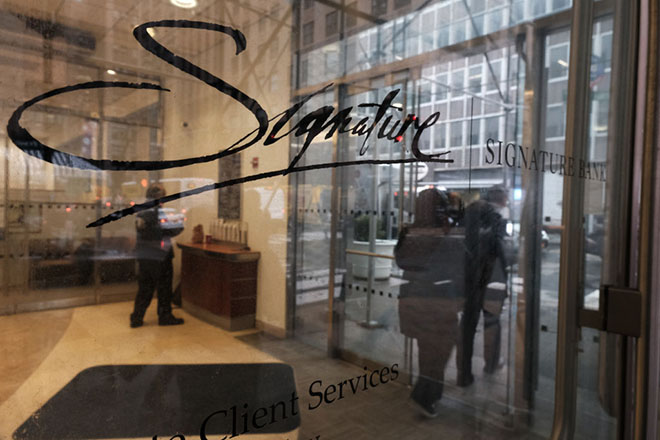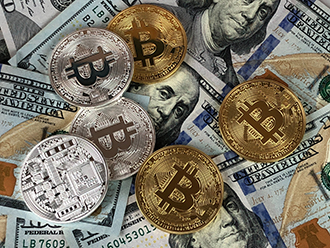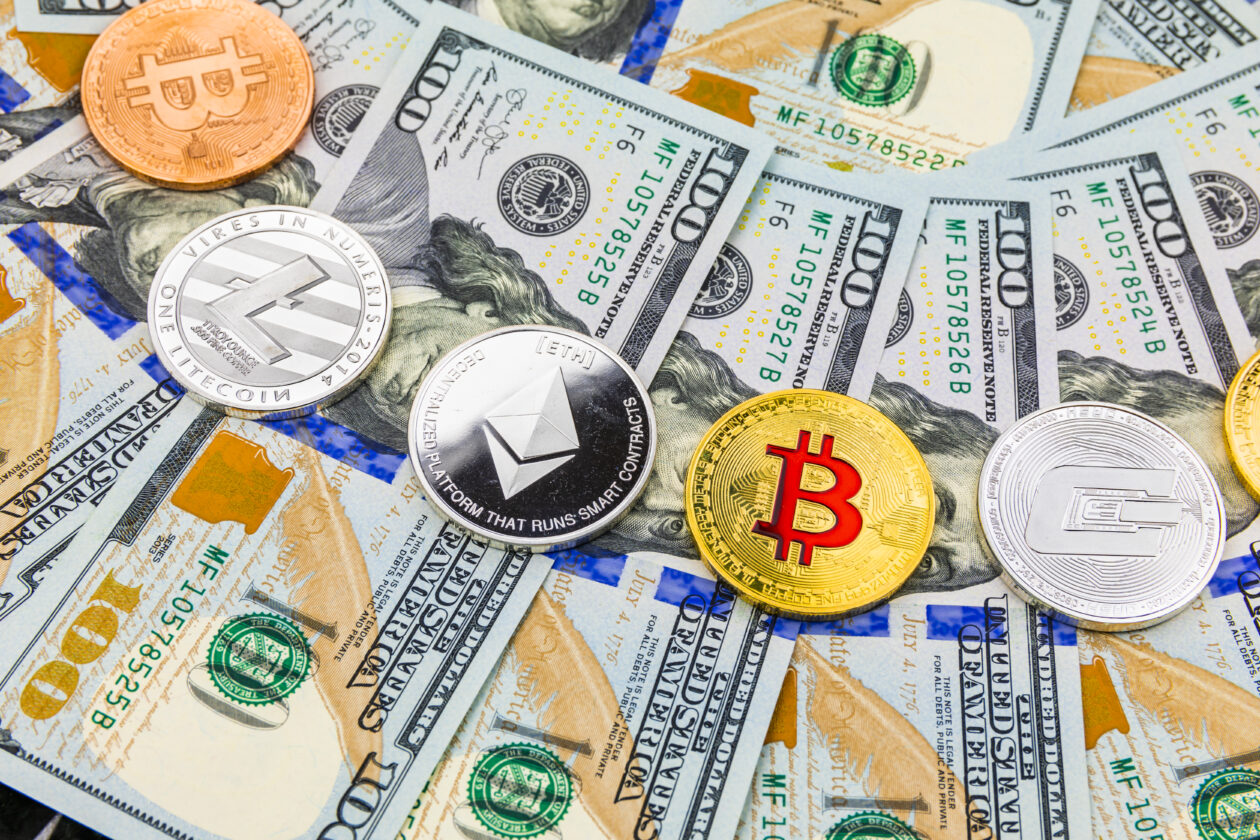Banks’ blockchain payment network challenged by perceived links to crypto
[gpt3]rewrite

|
The failure of Signature Bank and the liquidation of Silvergate Capital Corp. eliminated two of the leading crypto-friendly banks that had explored blockchain applications in banking. |
The myth that blockchain-enabled payments are exclusively linked to cryptocurrency makes it more difficult for the networks to realize greater adoption.
Blockchain-enabled payments had gained traction in the crypto world and boosted growth in some banks. In February, the technology provider Tassat Group Inc. said its total transaction volume since its inception in 2019 exceeded $1 trillion, but that included the volume of Signature Bank’s platform Signet, which is now under the Federal Deposit Insurance Corp. and no longer serves its main user base of crypto firms. Activity would drop significantly with the failure of Signature Bank and the liquidation of Silvergate Capital Corp., two of the leading crypto-friendly banks that had explored blockchain applications in banking.
There are other ways to deploy the technology. Banks have been looking to use blockchain to process payments for other industries and have made some inroads into sectors such as shipping and payroll processing. But gaining more acceptance is now being challenged by the perceived link between crypto and blockchain.
“There is one a lot of negative connotation Today where human beings is set blockchain and crypto in the same boat, and the two are very different thing,” said Chirag Bhavsar, president of Cogent Bank, which announced a blockchain-enabled platform in January 2022 developed by Tassat Group.
|
Proponents believe that blockchain technology can make payments faster and more secure since the ledger of transactions is updated in real time and cannot be changed.
“The true value of blockchain technology is that it is a distributed, record-keeping tool that is immutable,” said John Beccia, CEO of financial technology advisory firm FS Vector.
But given the negative association with crypto, the pace of blockchain adoption has slowed at some banks. SouthState Bank NA, a unit of SouthState Corp., previously aimed to enter a pilot program in 2023 to test blockchain payments, but it has now decided to reconsider the decision, said Chris Nichols, director of capital markets at SouthState Bank.
“We still see a clear use case, but we now believe we have more time and will not try to get ahead of the regulators or the competition,” Nichols said.
The blockchain and the crypto link
The association between blockchain and cryptocurrency originates in how all blockchain networks perform payments. These networks usually use cryptographic tokens to represent the value of banks’ deposits, so that these tokens can be transferred on the blockchain.
Banks have argued that tokens that act as a means of payment should be treated differently by regulators than crypto-like ones bitcoin and ethereum which are designed to motivate miners and traders to make money. But the two have been lumped together.
From a regulatory perspective, banks that use blockchain technology and banking crypto firms are both under supervision in the same category of the banks’ digital asset-related activities. Both require prior approval from the Federal Deposit Insurance Corp., the Office of the Comptroller of the Currency and the Federal Reserve depending on the banks’ primary regulators.
In a December proposal, the FDIC defined cryptoassets as “any digital asset implemented using cryptographic techniques” and proposed adding cryptoassets to the definitions of “non-deposit products.” It raised concerns from banks investing in blockchain-enabled payments because it questioned whether funds sent by a bank over a blockchain network could be marketed as FDIC-insured to end customers.
USDF Consortium, a group of nine banks that aim to transfer value via tokenized deposits on blockchain, urged the FDIC to clarify that tokenized deposits may qualify for FDIC insurance, according to a comment letter dated April 7.
“After all, products like the USDF already require notification to the FDIC under its interpretive guidance. The impact of an overbroad definition would deter banks from leveraging blockchain technology to enhance traditional bank deposit payment services,” the USDF consortium wrote.
The USDF Consortium has recently switched to a private blockchain from a public one to address regulators’ concerns, and it has been awaiting regulatory approval to take it live.
The member banks of the USDF Consortium maintain a long-term commitment to exploring blockchain applications in banking despite recent volatility, Rob Morgan, CEO of the USDF Consortium, said in an interview. Morgan noted that management teams have been “focused on different things” lately, “but that does not change the long-term belief in the importance of blockchain in driving the future of financial services.”
Targeting a new audience
Ryan Zacharia, managing partner of JAM FINTOP, a member of the USDF Consortium, reiterated the idea that tokenized deposits are not tied to any industry, but are “more about making the back-end payment infrastructure for banks more efficient.”
Banks – including Signature when it was operational – have shrunk their relationships with crypto companies and aim to use blockchain-enabled payment networks with other clients.
“We have created over 20 use cases for our private permissioned blockchain technology, the largest being shipping, cargo, logistics, private equity capital talks and more,” Kevin Greene, Chairman and CEO of Tassatwrote in an email.
Although the technology is available, Cogent Bank sees the commercial challenge of expanding its blockchain payment network beyond crypto verticals because there are other payment options that have better usage or more regulatory clarity that will do the job, and some of these also support real-time payments, albeit not 24/7.
“What Tassat offers can be done with or without blockchain today,” Bhavsar noted. “To me, it is not necessarily About blockchain as a lot as it is About real time payments.”
Orlando, Florida-based Cogent Bank initially planned to use the blockchain payment platform to seek crypto customers, but soon found it difficult to compete against Signature and Silvergate. The bank eventually stopped its outreach to crypto firms in late 2022 due to market disruptions and regulatory uncertainties.
SouthState is also implementing a broader real-time payments strategy. With The Clearing House’s RTP network and the upcoming rollout of the FedNow service, adding a blockchain rail is not a high priority, Nichols said.
Convincing a wide range of companies to use blockchain won’t happen overnight, according to Bhavsar.
“Bout I do believe the technology is there to be able to do this,” said Bhavsar.”I Think that gradually, this type of payment platform want be the norm, about it is one government sponsored Network or not.”
[gpt3]



